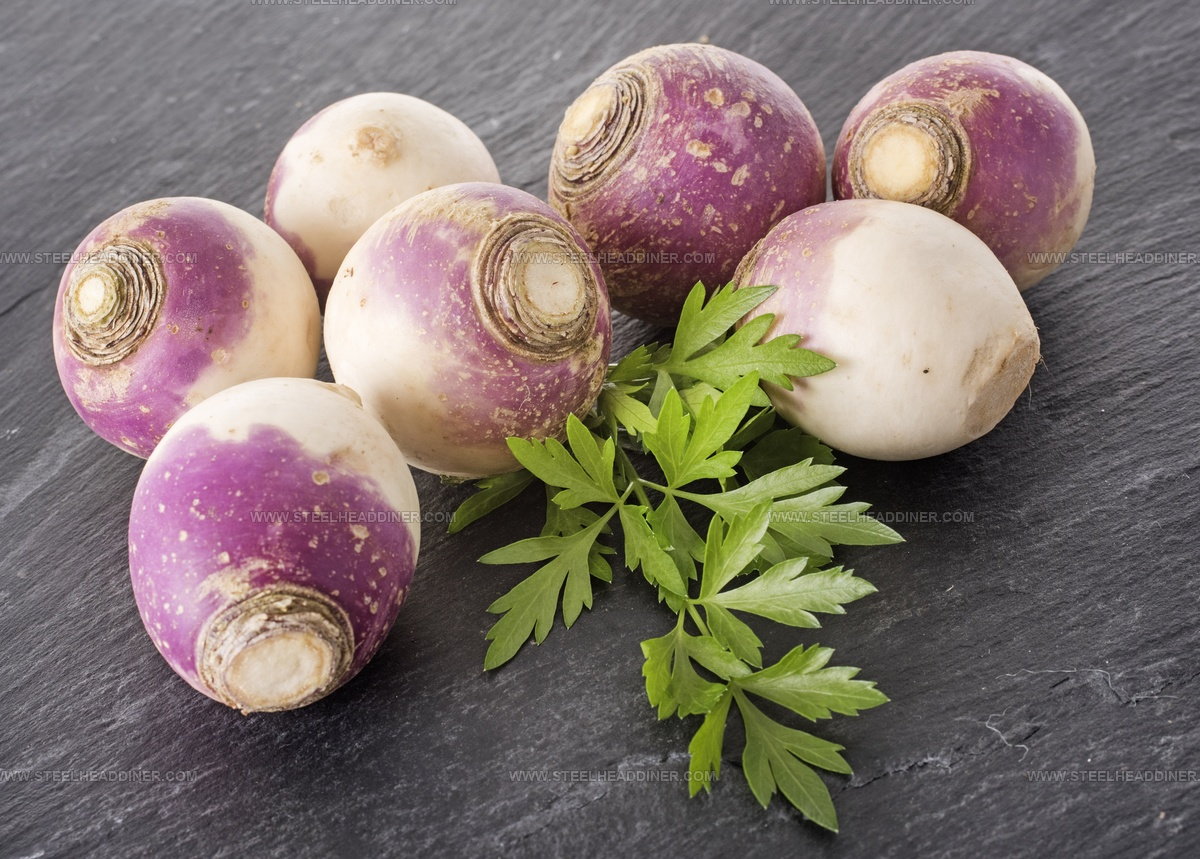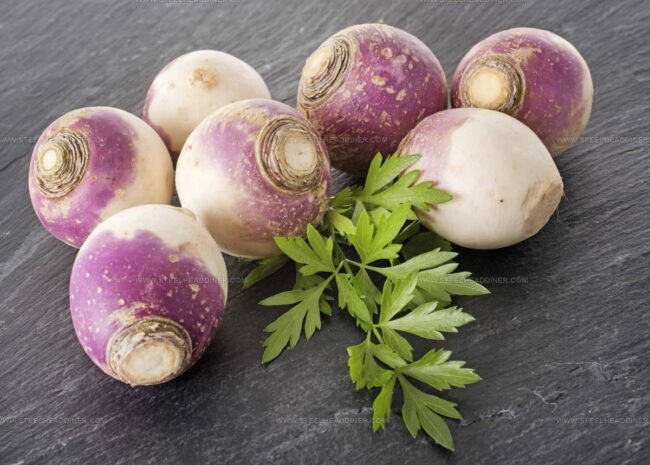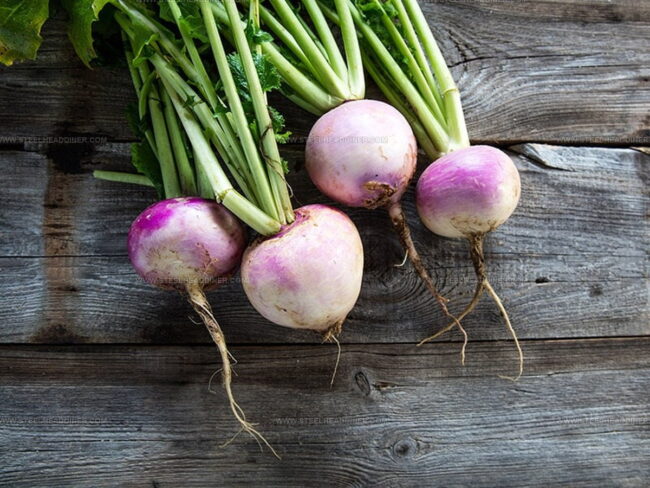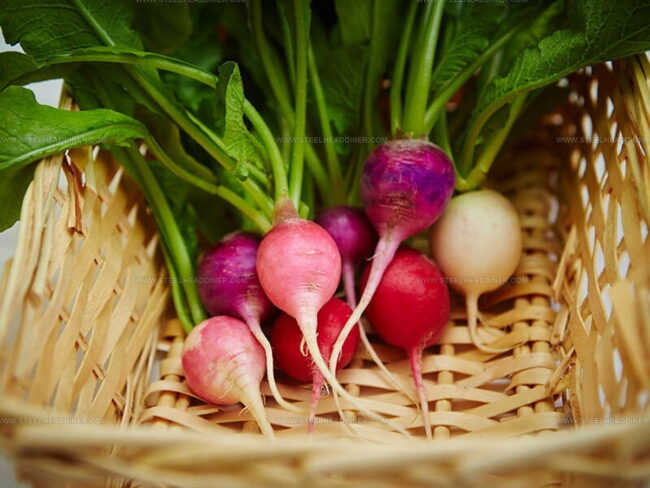What Does Turnip Taste Like? Discover This Root’s Unexpected Flavor
Root vegetable enthusiasts often wonder about the unique flavor profile of turnips, a nutritious and versatile crop that frequently surprises home cooks.
Humble vegetables grow underground, hiding a complex taste that many people find intriguing yet misunderstood.
Some individuals shy away from turnips, believing they might be bland or unpalatable.
Contrary to popular belief, turnips offer more than meets the eye, with a nuanced taste that can transform depending on preparation methods.
Their culinary potential extends far beyond simple boiling or roasting, making them an exciting ingredient for experimental cooks.
The texture and flavor of turnips can shift dramatically based on factors like maturity, cooking technique, and accompanying seasonings.
If you're curious about unlocking the delicious potential of this often-overlooked vegetable, understanding its taste characteristics will open up a world of exciting culinary possibilities.
Dive into this article to unravel the delightful mysteries of turnip flavors.
Turnip: Simple Overview
Turnips are easy-to-grow root vegetables that offer both great nutrition and surprising variety, making them a smart choice for any kitchen or garden:
Trying turnips in new ways can help you see just how flexible and tasty this humble vegetable can be.
How Does Turnip Taste?
Turnips boast a sweet and nutty flavor profile.
Their taste carries a slight sourness without strong bitter or spicy notes.
Nordic cooking often uses turnips as a potato substitute.
Packed with vitamin A and fiber, turnips make a healthy vegetable choice.
Affordable and easy to prepare, these veggies offer a mild flavor with a subtle spicy hint.
Turnips stand out with their distinctive taste.
When fresh, they have a mild spiciness that shifts dramatically during cooking.
Their flavor becomes sweeter, nuttier, and more earthy as heat is applied.
Texture follows a similar transformation.
Raw turnips feel crisp and starchy, while their taste changes as they age.
Young turnips remain milder and crunchier compared to older specimens, which develop more peppery and bitter characteristics.
Like many root vegetables, cooking alters turnips' flavor complexity.
Turnip Varieties: Flavor and Culinary Uses
Turnips come in several varieties, each with its own unique flavor and best ways to enjoy them in the kitchen:
Turnip: Good For Your Health
Turnips are a versatile root packed with benefits.
See why they make a nutritious choice for your next meal.
Turnips Are Great For Heart Health
Turnips pack a powerful health punch with their potassium content.
This mineral works like a natural helper for blood vessels, making them wider and more relaxed.
When blood vessels open up, blood pressure drops, which means less stress on your heart.
Lower blood pressure reduces chances of serious heart problems like heart attacks and strokes.
Blocked arteries become less likely when you eat these root vegetables.
Turnips also bring dietary fiber to your plate, which acts like a cleaning crew for your heart.
Fiber helps sweep away extra cholesterol, keeping your heart strong and clear of harmful buildup.
Turnips Help With Stomach Issues
Turnips help your body move waste more smoothly through the gut.
Their high fiber content supports healthy digestion and reduces common stomach problems like being blocked up, having loose stools, feeling swollen, or experiencing painful stomach cramps.
Turnips Fight Cancer
Turnips pack a powerful health punch with nutrients like Vitamin C, Vitamin E, manganese, and beta-carotene.
These components work together to shield our bodies from harmful free radical damage.
Belonging to the cruciferous vegetable family, turnips harbor sulforaphane, a natural compound known for its cancer-fighting properties.
Regular turnip consumption might help ward off serious cancers, including melanoma, esophageal, prostate, and pancreatic types.
Turnips Support Strong Bones
Calcium and potassium in turnips work hard to keep bones strong.
Turnips pack a powerful punch with calcium that supports connective tissue growth.
Regular turnip consumption could shield you from joint problems, helping ward off serious conditions like osteoporosis and rheumatoid arthritis.
Tips To Make Turnips Tasty
Salt, butter, and cream can help improve turnips that taste bitter or seem less appealing.
These ingredients soften the sharp taste of turnips and create a smoother, richer result.
Mixing roasted garlic with butter and cream works especially well.
Sweet and flowery herbs like dill, rosemary, and basil match nicely with turnips.
Herbs can be added while roasting for extra flavor.
Turnip Appearance Guide
Turnip types show subtle color variations, with most sporting white roots that shift to purple where leaves start growing.
Green leafy tops mark these vegetables.
Confusion often arises between turnips and rutabagas because of their similar white and purple coloring, but they remain separate plant varieties.
Turnips come with white flesh and either white or white and purple outer layers, while rutabagas grow larger and carry yellow flesh under purple-tinted yellow skin.
Seven Ways To Cook Turnips
Turnips can be prepared in a surprising variety of ways.
Here are seven creative methods to cook with this humble root.
Turnips Taste Great In Matignon
Chefs slice carrots, potatoes, and leeks carefully to match each other in size.
Kitchen experts use these chopped vegetables as a helpful base for many different cooking methods.
Matching vegetable cuts helps create balanced flavors and consistent textures in fried and slow-cooked dishes.
Matignon cooking focuses on precision when preparing these vegetable combinations to support main ingredients and enhance overall meal quality.
Turnips In Vinegar Brine
Small turnips make wonderful pickles with their crunchy feel and tasty sweetness.
Japan-grown turnips work best when cut in half and soaked in a tangy white vinegar solution for seven days.
Turnips And Fried Eggs Make A Tasty Pair
Sizzling turnips dance in a heavy skillet, creating a rustic breakfast dish with crispy golden edges.
Small cubes of turnip brown and soften, building a savory base for eggs that will crown this hearty morning meal.
Cracking fresh eggs right over the vegetable mixture, you watch as whites spread and yolks settle into warm pockets.
Letting the eggs cook until edges crisp and centers remain slightly runny, this simple skillet hash brings comfort and flavor to start your day.
Salt and pepper sprinkled generously add depth to the pan, while the turnips caramelize and develop a rich, nutty taste that pairs perfectly with the creamy egg topping.
Turnips Used In Salad Dishes
Raw turnips slice up nicely for salads, offering a crisp texture much like radishes.
Whole turnips work well on veggie platters for snacking.
Make A Gratin Dish
Slice turnips and potatoes carefully, stacking them in neat, even layers.
Potatoes bring a solid structure to this dish, while their mild flavor balances the turnips' subtle sweetness.
Each vegetable adds depth and character to the finished gratin, creating a harmonious blend of textures and tastes.
Steamed Turnip Option
Cooking turnips gently helps keep their fresh flavor intact.
Steaming works well to maintain the vegetable's natural goodness while keeping its crisp texture.
Young turnips taste especially sweet and tender when prepared this way.
Careful steaming protects the delicate flavor and nutrients that make these veggies so special.
Soft heat allows the turnips to soften without losing their unique character.
When you steam turnips, you can enjoy their pure taste without adding extra ingredients.
This cooking method keeps the vegetables light and delicious, letting their natural qualities shine through.
Mashed Turnip Recipe
Savory beef meets sweet turnips in this warming winter side dish.
Hearty braised meat pairs perfectly with creamy mashed turnips, creating a rich and satisfying meal.
Root vegetables shine in cold weather cooking, bringing depth and comfort to your dinner plate.
Slow-cooked beef falls apart with tender touches, while smooth turnip mash adds gentle sweetness to balance the meat's robust flavor.
Winter meals call for filling dishes that warm you from inside out, and this combination delivers pure seasonal satisfaction.
Soft turnips blend smoothly when mashed, offering a delicate alternative to standard potato sides.
Braised beef provides rich protein and deep taste notes that complement the subtle turnip base.
Simple ingredients come together to make something special - a classic cold weather recipe that feels like home cooking.
Tender meat and creamy vegetable sides create a complete meal that feels both traditional and fresh.
Hearty meals matter most during chilly months, and this dish delivers exactly what hungry diners want: warm, filling comfort food with real flavor and substance.
How to Store Turnips for Maximum Freshness
Keeping turnips fresh is simple with a few easy steps, whether you’re storing roots or greens:
Following these steps helps you enjoy the best flavor and texture from your turnips, whether you eat them right away or save them for later.






Maya Thompson
Culinary Content Creator & Nutrition Enthusiast
Expertise
Healthy single-serving recipes, Meal prepping for individuals, Integrating nutrition into everyday cooking, Vegetarian and plant-based cuisine
Education
The Chef’s Academy at Harrison College
Associate of Applied Science in Culinary Arts
Focus: Nutrition, meal planning, and culinary techniques for healthy living.
Maya found her passion in the kitchen by mixing good food with good energy. After earning her culinary degree at The Chef’s Academy at Harrison College, she made it her mission to keep cooking simple, wholesome, and packed with flavor.
At Steelhead Diner, Maya shares easy, healthy recipes built for real life. For Maya, great food seems like a celebration of everyday moments, made better one fresh bite at a time.